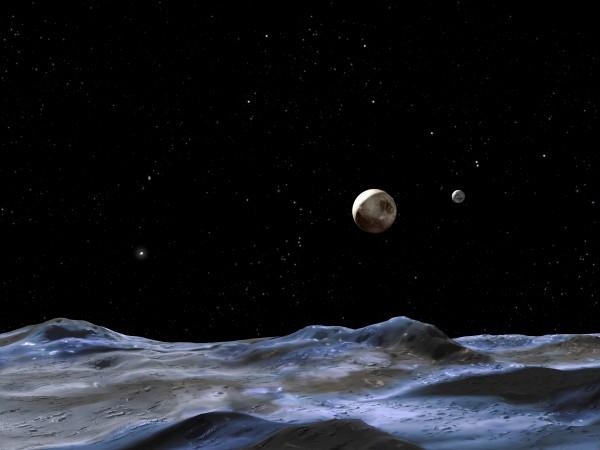
According to a new study conducted by NASA, Pluto's moon has cracks in it, which indicate that it might possess huge ocean of liquid water underneath.
Scientists believe that if there was an ocean on Charon, the largest moon of Pluto, it would most likely be frozen as the surface temperature of Pluto is approximately -380 degrees Fahrenheit (-229 Celsius).
It is believed that Charon may have been formed from a giant impact on Pluto that eventually generated huge tides thereby leading to surface fractures, thus providing evidence of a long-ago ocean.
"Depending on exactly how Charon's orbit evolved, there may have been enough heat from tidal deformation to maintain liquid water beneath the surface of Charon for some time," Alyssa Rhoden of NASA's Goddard Space Flight Center said in a press release.
Pluto's moon is not the only moon in the outer solar system, where cracks were observed indicating a deep ocean inside. Even Europa - Jupiter's moon and Enceladus - Saturn's moon were found to have cracks in them.
"Since it's so easy to get fractures, if we get to Charon and there are none, it puts a very strong constraint on how high the eccentricity could have been and how warm the interior ever could have been. This research gives us a head start on the New Horizons arrival - what should we look for and what can we learn from it." said Rhoden.
The huge distance between the Earth and Pluto has always been a challenge for the scientists to collect scientific data on Pluto and its moons. However, in July 2015, NASA's New Horizons spacecraft plans to visit Pluto and Charon and provide clear images of the moon, in order to determine the cracks in the surface and detailed evidence that suggest it once possessed underground ocean.
Examining the cracks will help in determining if Pluto's temperature was ever so high enough to allow it to have an ocean beneath its surface.
"Our model predicts different fracture patterns on the surface of Charon depending on the thickness of its surface ice, the structure of the moon's interior and how easily it deforms, and how its orbit evolved. By comparing the actual New Horizons observations of Charon to the various predictions, we can see what fits best and discover if Charon could have had a sub-surface ocean in its past, driven by high eccentricity." Rhoden added.
Liquid water is an essential ingredient for life. However, life also needs an useable energy source along with many key elements, such as nitrogen, carbon and phosphorus. It is not clear if the oceans discovered in Europa and Enceladus have these additional ingredients, or if these oceans formed long enough to sustain any life forms. Scientists are sceptical about any life forms to have existed beneath the icy crust of Charon.
















